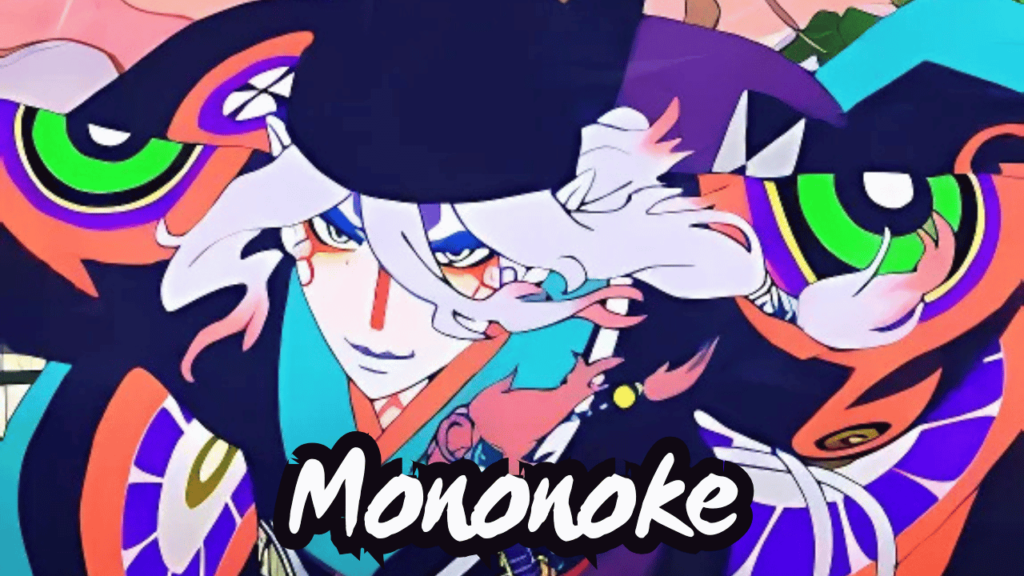In the chambers of the Edo harem, two newcomers uncover political intrigue, rivalry and a vengeful spirit only one traveling medicine seller can vanquish.

Mononoke The Movie: The Phantom in the Rain (2024) marks the highly anticipated return of the cult-favorite anime series Mononoke to the big screen. Directed by Kenji Nakamura, who helmed the original series, the film delves deeper into its distinct world of supernatural intrigue and complex human emotion.
With its vivid artistry and layered storytelling, this anime film continues the legacy of blending Japanese folklore with suspenseful drama, this time set against the backdrop of the Edo periods secretive harem chambers.
A Tale of Spirits and Schemes
Set in the Edo period, the story takes place within the cloistered walls of an imperial harem, a space teeming with luxury, ambition, and hidden tension. Two newcomers, portrayed by the voices of Tomoyo Kurosawa and Aoi Yuki, are introduced to this world. Amidst the layers of political intrigue and rivalry, they encounter a vengeful spirit whose presence disrupts the fragile balance of power within the chambers.
The only one capable of confronting this malevolent force is the enigmatic Medicine Seller, voiced by Hiroshi Kamiya. With his characteristic calm demeanor and unerring sense of justice, he seeks to uncover the truth behind the spirit’s origins, peeling back the layers of human greed, betrayal, and pain that gave it form.
As the Medicine Seller investigates, the line between the living and the dead blurs, revealing the dark secrets harbored by those within the harem. The spirit’s wrath becomes a metaphor for unresolved grievances, challenging the characters to confront their pasts.
A Visual and Auditory Feast
Kenji Nakamura’s direction ensures that the film retains the visual flair that made the original series iconic. The animation blends traditional Japanese art styles with surreal and modern techniques, creating a striking visual experience. Every frame feels like a painting, with intricate details in the characters’ kimono patterns, the flickering lamplight, and the cascading rain that punctuates the narrative.
The rain itself is a recurring motif, symbolizing cleansing, concealment, and the weight of sorrow. The sound design, enriched by a haunting score, intensifies the atmosphere, making every creak of a wooden floor and whisper of wind feel ominous. Composer Yasuharu Taka nashi’s music perfectly complements the story, alternating between eerie silence and crescendos of emotion.
A Stellar Cast Brings Life to Complex Characters
The voice cast delivers exceptional performances, breathing life into the film’s intricate characters. Hiroshi Kamiya reprises his role as the Medicine Seller, imbuing the character with his trademark stoicism and depth. Tomoyo Kurosawa and Aoi Yuki bring emotional resonance to their roles as the harem newcomers, while Kana Hanazawa, Mami Koyama, and Haruka Tomatsu add layers of intrigue as key players in the harem’s web of secrets.
Themes Beyond the Supernatural
While The Phantom in the Rain is rooted in supernatural elements, it is equally a study of human nature. The film explores themes of power, jealousy, and the lingering consequences of unspoken truths. It asks profound questions about the lengths people will go to secure their desires and the price of unresolved guilt.
Conclusion
Mononoke The Movie: The Phantom in the Rain is a masterful continuation of a beloved anime series, combining stunning artistry with a narrative that is both thought-provoking and emotionally gripping. Fans of the original series and newcomers alike will find themselves immersed in its haunting world, where spirits and humans collide in a tale of mystery, redemption, and revelation. For those who appreciate anime that challenges the mind and stirs the soul, this film is an unmissable experience.
